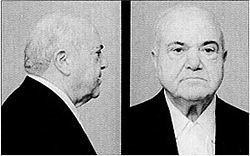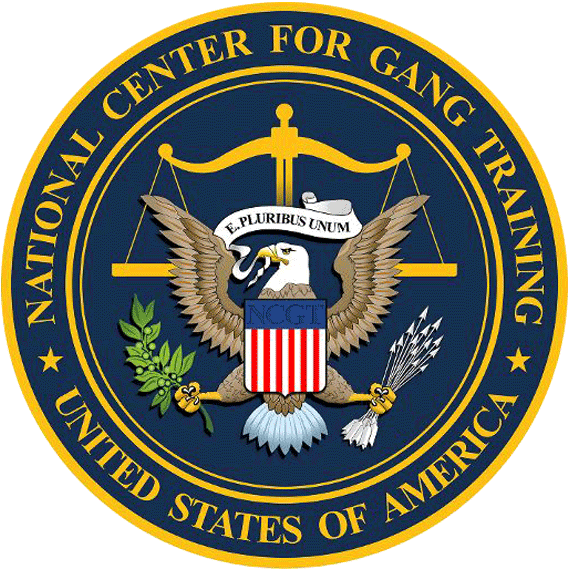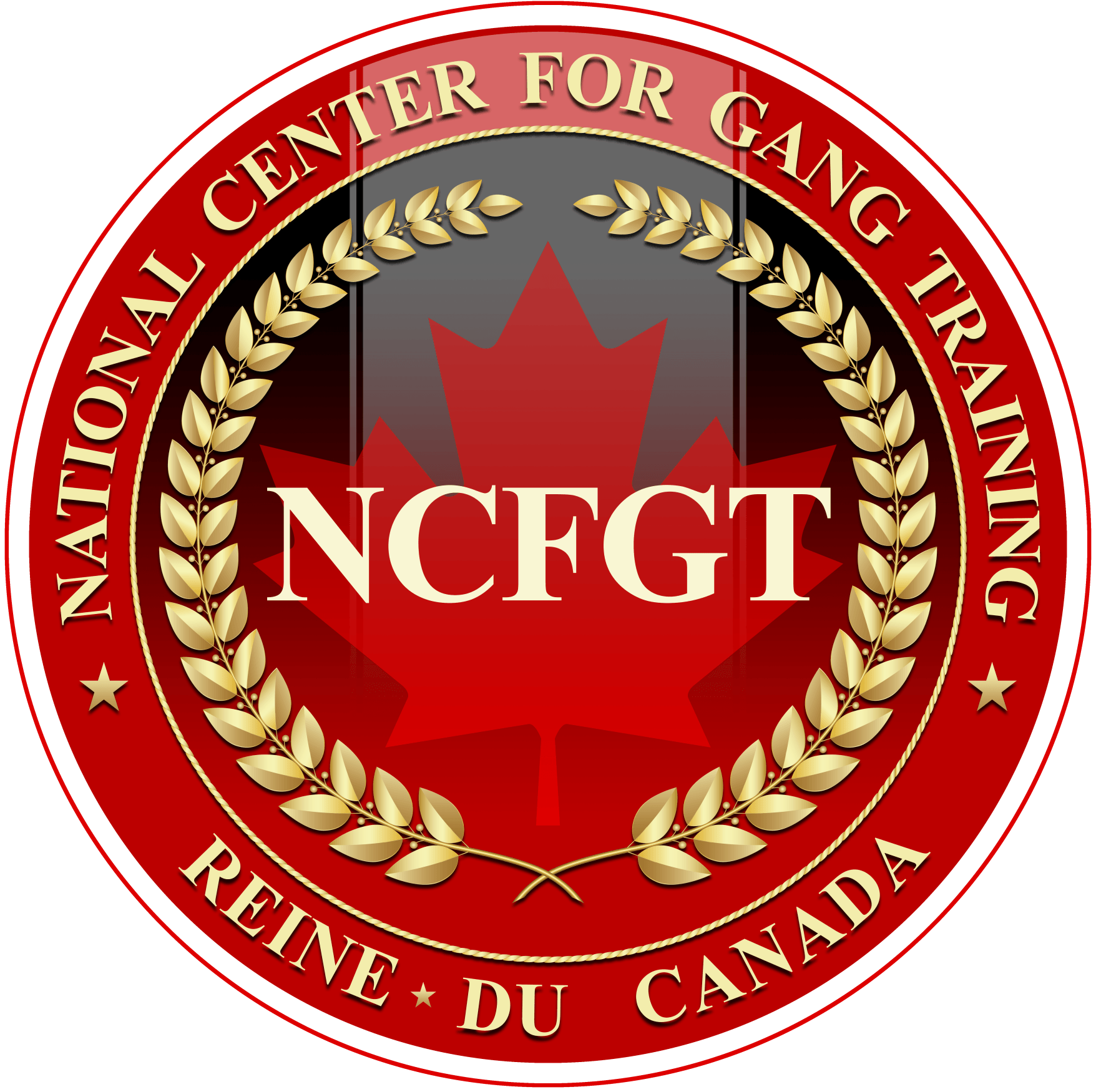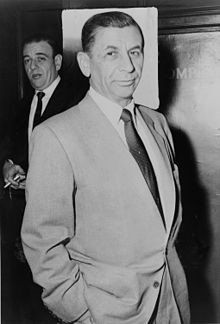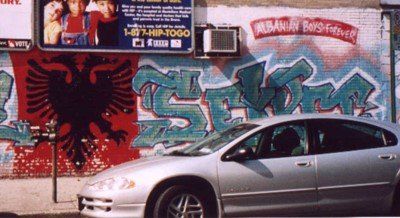Jewish Mafia
Jewish-American Organized Crime
Meyer Lansky was instrumental in the creation of Las Vegas.
Jewish-American organized crime (sometimes called the Jewish Mob, Jewish Mafia, Kosher Mafia, or the Kosher Nostra—a pun on Cosa Nostra), emerged during the late 19th century and early 20th century.
In the late 19th century in New York City, Monk Eastman operated a powerful Jewish gang that competed with Italian and Irish gangs, notably Paul Kelly's Five Points Gang, for control of New York's underworld. In the early 1920s, stimulated by the economic opportunities of the Roaring Twenties and later, Prohibition, organized crime figures such as Arnold Rothstein were controlling a wide range of criminal enterprises.
According to crime writer Leo Katcher, Rothstein "transformed organized crime from a thuggish activity by hoodlums into a big business, run like a corporation, with himself at the top." Rothstein was allegedly responsible for fixing the 1919 World Series.
Origins and characteristics
Jewish-American gangsters were involved in many different criminal activities, including murder, racketeering, bootlegging, prostitution and narcotics. Their role was also significant in New York's burgeoning labor movement, especially the garment and trucking unions, as well as the poultry industry. Jewish organized crime was incompatible with the ethics of Judaism, fueled anti-Semitism and deeply concerned the Jewish community. Jewish organized crime was used by anti-Semites and anti-immigration supporters as arguments to bolster their agenda. Jewish gangs controlled portions of the Lower East Side and Brownsville in New York City, and were also present in other major American cities.
Jewish American organized crime was a reflection of the ethnic succession among gangsters, which has tended to follow the immigrant waves in the United States: English, German, Irish, Jewish, Italian, Asian and Latino. Ethnic involvement in organized crime gave rise to alien conspiracy theories in the US law enforcement community, in which the conception of organized crime as an alien and united entity was vital. The involvement of a small percentage of recent immigrants in organized crime created a lasting stereotype of devious immigrants corrupting the morality of native-born Americans. Organized crime was a complex set of relations between the recently arrived Jewish and Italian criminals and groups like the Irish-American organized crime networks, which had been established before the 1920s and which the newer groups were sometimes subordinate to.
From the late 1960s, Jewish American organized crime became part of an entire literature on "tough Jews." The Jewish gangsters and boxers in the pre-World War II era were seen as tougher, more aggressive role models, which freed Jews from the dominant stereotypes of cowardice, pacifism, intellectualism and professional legitimacy. The stigma of defenselessness and powerlessness associated with Jews, compared with the physical aggressiveness and lawlessness more associated with the Irish and Italian immigrants began to disappear. According to Rich Cohen, author of Tough Jews: Fathers, Sons and Gangster Dreams:
"if Jewish gangsters still thrived today, if they hadn't gone legit, if Jews of my generation didn't regard them as figments, creatures to be classed with Big Foot and the Loch Ness monster, I think the Jewish community would be better off."
Following Cohen's line of reasoning, one could say that Jewish American organized crime played a role in the emancipation of the Jewish American community from the ancient stereotypes. However, Cohen's description of Jewish gangsters ignores their criminality and immorality. These tough characters were still gangsters who extorted, exploited and murdered other members of the American Jewish community for profit. They forced Jewish women into the sex industry, and were generally considered a scourge within their own community. The Yiddish press and literature of the 1920s and 30s were resolute in its condemnation of Jewish mobsters.
History
19th Century-early 20th Century
A large wave of Jewish immigrants from Eastern Europe in the late-19th century and early 20th century produced Jewish mobsters such as Max "Kid Twist" Zwerbach, "Big" Jack Zelig, and Vach "Cyclone Louie" Lewis who competed with and were acknowledged by Italian and Irish gangs.
Just as their Italian counterparts, gangs specializing in extortion began operating in the heavily Jewish neighborhoods of New York's Lower East Side most prominently the so-called Yiddish Black Hand headed by Jacob Levinsky, Charles "Charlie the Cripple" Litoffsky and Joseph Toplinsky during the early 20th century. A significant Jewish underworld already existed in New York at the start of the 20th century, with Jewish mobsters conversing in a jargon with Yiddish origins. A pimp was known as a "simcha," a detective as a "shamus" and a loafer as a "trombenik." Jewish-American organized crime arose among slum kids who in pre-puberty stole from pushcarts, who as adolescents extorted money from store owners, who as young adults practiced schlamming (wielding an iron pipe wrapped in newspaper against striking workers or against scabs) – until as adults they joined well organized gangs involved in a wide variety of criminal enterprises boosted by Prohibition.
The lure of quick money, power and the romance of the criminal lifestyle was attractive to both second-generation Jewish and Italian immigrants. There was a supposed Jewish "crime wave" in early-20th-century New York. In disturbing numbers young Jews had joined crime "rackets," it was said, along with children of Irish, Italian and other immigrants. However, the supposed Jewish-immigrant crime wave was mostly an urban legend. Crime and population figures show that Jews in New York committed crimes at a rate far below the average for the wider society. As described by sociologist Stephen Steinberg, about a sixth of the city's felony arrests were Jews during the 1920s, when Jews constituted nearly a third of the city’s population.
As the 20th century progressed, Jewish-American mobsters such as "Dopey" Benny Fein and Joe "The Greaser" Rosenzweig entered labor racketeering, hiring out to both businesses and labor unions as strong arm men. Labor racketeering or "labor slugging" as it was known, would become a source of conflict as it came under the domination of several racketeers including former Five Points Gang members Nathan "Kid Dropper" Kaplan and Johnny Spanish during the Labor slugger wars until its eventual takeover by Jacob "Gurrah" Shapiro in 1927. Other Jewish organized crime figures involved in controlling labor unions include Moses Annenberg and Arnold Rothstein, the latter reportedly responsible for fixing the 1919 World Series.
Prohibition
According to crime writer Leo Katcher, Rothstein "transformed organized crime from a thuggish activity by hoodlums into a big business, run like a corporation, with himself at the top." According to Rich Cohen, Rothstein was the person to see in Prohibition (1920–1933) a tremendous business opportunity, a means to enormous wealth and power. Rothstein "understood the truths of early 20th century capitalism (hypocrisy, exclusion, greed) and came to dominate them". According to Cohen, Rothstein was the 'Moses of Jewish gangsters', a rich man's son, who showed the young and uneducated hoodlums of the Bowery how to have style. Lucky Luciano, the prominent boss of the Italian-American Mafia once said that Rothstein "taught me how to dress". The stereotypical attire of the American mobster portrayed in movies can trace its roots directly to Rothstein.
During Prohibition, Jewish gangsters became major operatives in the American underworld and played prominent roles in the distribution of illegal alcohol and the spread of organized crime throughout the United States. At the time, Jewish gangs operated primarily in America's largest cities, including Cleveland, Detroit, Minneapolis, Newark, New York City, and Philadelphia. Numerous bootlegging gangs such as the Bug and Meyer Mob headed by Meyer Lansky and Bugsy Siegel and Abe Bernstein's Purple Gang would see the rise of Jewish-American organized crime to its height. Other mobsters included Dutch Schultz, Moe Dalitz, Charles "King" Solomon and Abner "Longy" Zwillman became wealthy during Prohibition.
During this time, Luciano successfully eliminated the Old World Sicilian Mafia bosses like Joe Masseria and Salvatore Maranzano in the 1931 Castellammarese War and took control of the New York Italian Mafia. Luciano did not discriminate against Jews and valued long time associates such as Meyer Lansky and Benjamin 'Bugsy' Siegel. Several Jewish gangsters such as Red Levine and Bo Weinberg were used in the war as unsuspected non-Italian hitmen. After Masseria and Maranzano were murdered, a conference was held at New York's Franconia Hotel on November 11, 1931 which included Jewish mobsters such as Jacob Shapiro, Louis "Lepke" Buchalter, Joseph "Doc" Stacher, Hyman "Curly" Holtz, Louis "Shadows" Kravitz, Harry Tietlebaum, Philip "Little Farvel" Kovolick and Harry "Big Greenie" Greenberg. During this meeting, Luciano and Lansky convinced the Jewish-American mobsters of the benefits of cooperating with the Italian-American Mafia in a newly created consortium called the National Crime Syndicate by the press. At the meeting's conclusion, "Bugsy" Siegel supposedly declared "The yids and the dagos will no longer fight each other."
Those Jewish gangsters hostile to the idea of cooperation with non-Jewish rivals gradually receded, most notably Philadelphia bootlegger Waxey Gordon, who was convicted and imprisoned for tax evasion. Following Gordon's imprisonment, his operations were assumed by Nig Rosen and Max "Boo Hoo" Hoff.
Under Lansky, Jewish mobsters became involved in syndicate gambling interests in Cuba and Las Vegas. Buchalter would also lead the predominantly Jewish Murder Incorporated as the Luciano-Meyer syndicate's exclusive hitmen.
After World War II
For several decades after World War II, the dominant figures in organized crime were second-generation Jews and Italians, often working in concert. As late as the 1960s, Jewish presence in organized crime was still acknowledged as Los Angeles mobster Jack Dragna explained to hitman and later government informant Jimmy Fratianno:
"Meyer's got a Jewish family built along the same lines as our thing. But his family's all over the country. He's got guys like Lou Rhody and Dalitz, Doc Stacher, Gus Greenbaum, sharp fucking guys, good businessmen, and they know better than try to fuck us."
Jewish-American organized crime derived from dislocation and poverty, where language and custom made the community vulnerable to undesirables, the sort of thing that fosters criminality among any other ethnicity in a similar situation. As American Jews improved their conditions, the Jewish thug and racketeer either disappeared or merged into a more assimilated American crime environment. American Jews quietly buried the public memory of the gangster past; unlike the Mafia, famous Jewish American gangsters like Meyer Lansky, Dutch Schultz and Bugsy Siegel founded no crime families.
Much like Irish-Americans and other ethnicities (with the exception of Italian-American criminal organizations), Jewish-American presence in organized crime began to decline after World War II. Jewish-American individuals remained associated with organized crime, but the criminal organizations and gangs which once rivaled the Italian and Irish-American mobsters during the first half of the 20th century had eventually faded.
Late 20th Century to Present
In more recent years, Jewish-American organized crime has reappeared in the forms of both Israeli and Russian mafia criminal groups. The Soviet and Russian émigré community in New York's Brighton Beach contains a large Jewish presence, as does its criminal element. Some of these newer American-based Jewish gangsters, such as Ludwig Fainberg (who has lived in Ukraine, Israel and the United States but never Russia), share more in common culturally with Russia and the Soviet republics than their predecessors such as Meyer Lansky.
Israeli mobsters also have had a presence in the United States. The Israeli mafia (such as the Abergil crime family) is heavily involved in ecstasy trafficking in America.
Jewish-American organized crime and Israel
Several notable Jewish American mobsters provided financial support for Israel through donations to Jewish organizations since the country's independence in 1948. Jewish-American gangsters used Israel's Law of Return to flee criminal charges or face deportation. Notables include Joseph "Doc" Stacher, who built up Las Vegas by pairing the Jewish and Italian Mafia into a national organized crime syndicate. Prime Minister Golda Meir set to reverse this trend in 1970 when she denied entrance to Meyer Lansky. He was the mob's accountant, thought to be among the most powerful people in the country, with a gambling empire stretching the United States.
In 2010, it was reported by
Wikileaks that the United States Embassy in Israel, in a cable titled "Israel: The Promised Land of Organized Crime?", had expressed grave concern about the activities of Israeli organized crime figures and was taking measures to prevent members of crime families from being issued visas to the United States.
